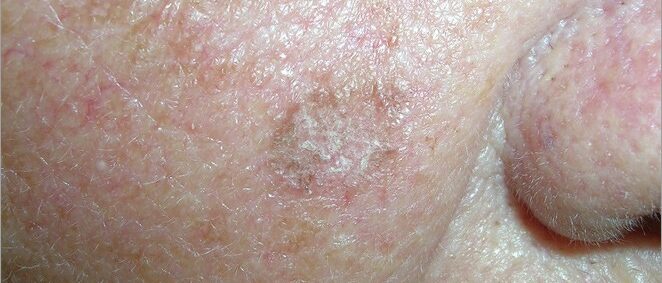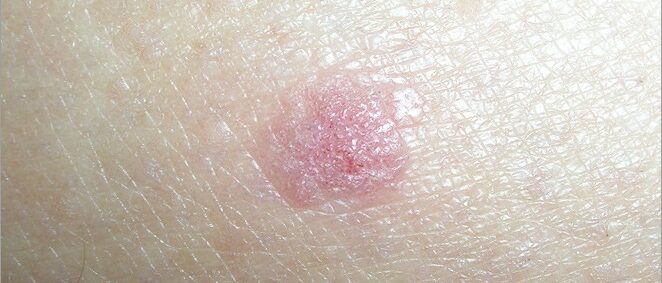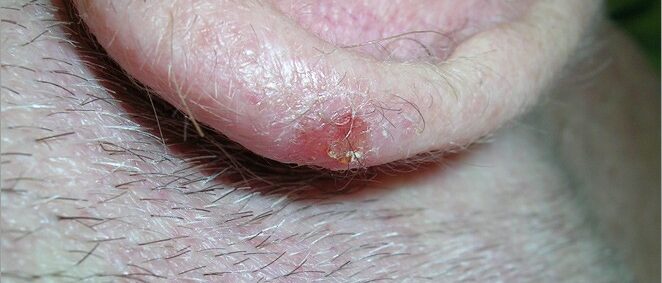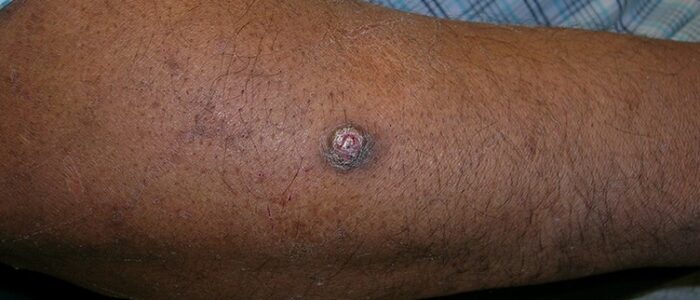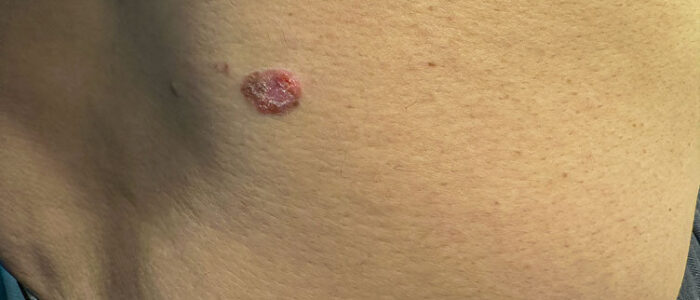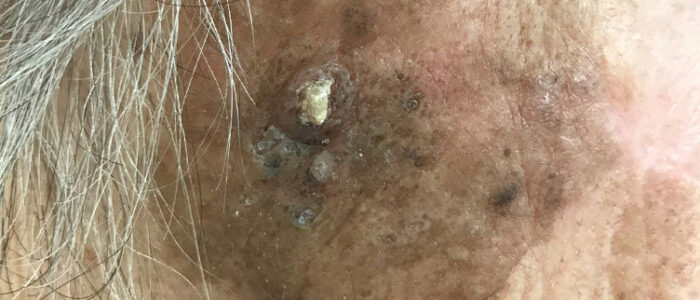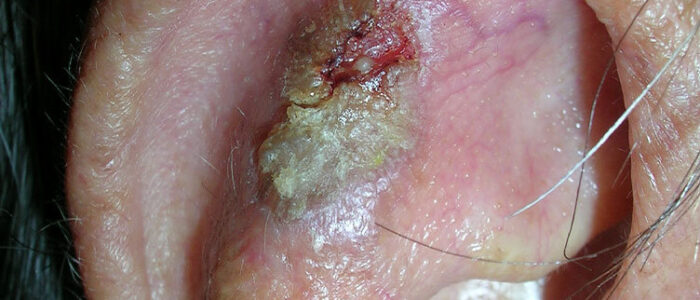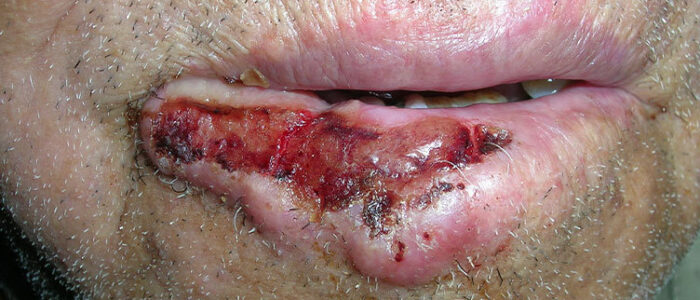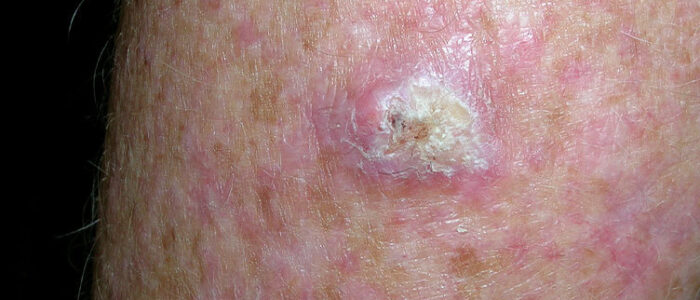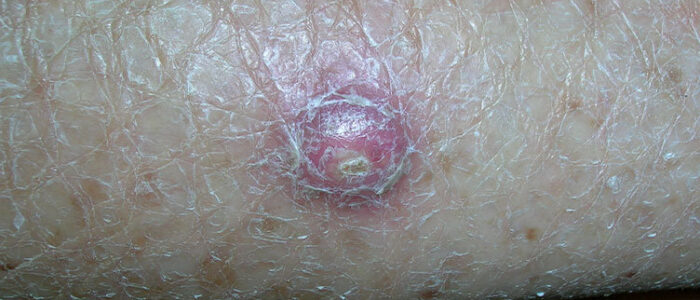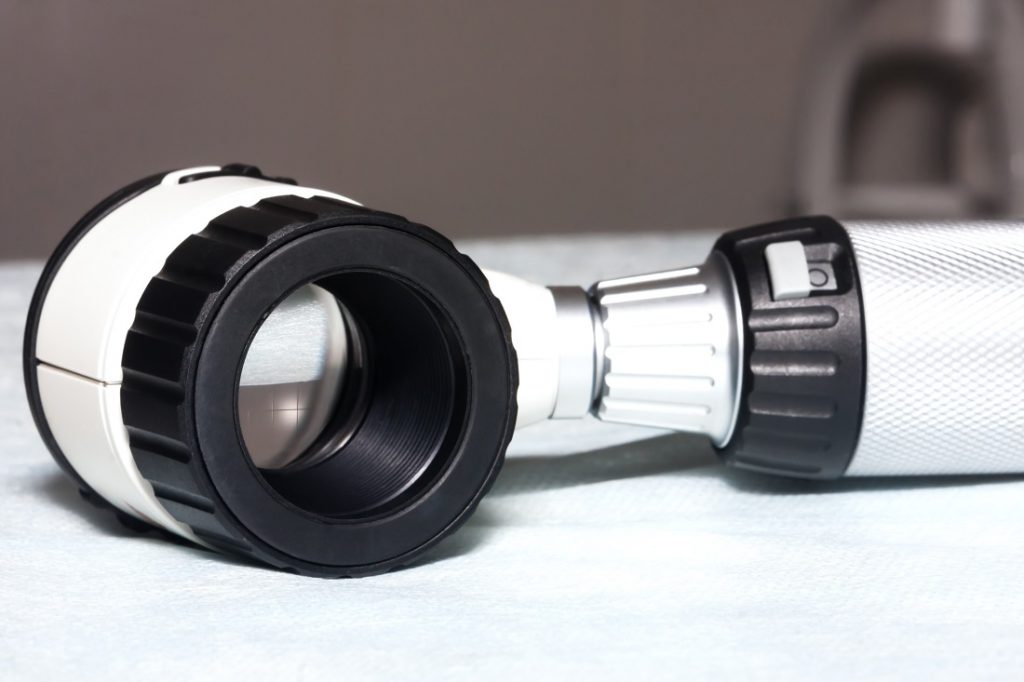Squamous Cell Carcinoma
Warning Signs & Pictures
What Does Squamous Cell Carcinoma Look Like?
It’s important to know what squamous cell carcinoma (SCC) looks like. Because, when caught promptly, almost all SCCs of the skin can be successfully treated. But when they become more advanced, these skin cancers can become dangerous.
That’s why it’s important to be on the lookout for any SCC warning signs, including new, changing or unusual skin growths.
How to spot an SCC
SCC of the skin can develop anywhere on the body but is most often found on exposed areas exposed to ultraviolet (UV) radiation like the face, lips, ears, scalp, shoulders, neck, back of the hands and forearms. SCCs can develop in scars, skin sores and other areas of skin injury. The skin around them typically shows signs of sun damage such as wrinkling, pigment changes and loss of elasticity.
SCCs can appear as thick, rough, scaly patches that may crust or bleed. They can also resemble warts, or open sores that don’t completely heal. Sometimes SCCs show up as growths that are raised at the edges with a lower area in the center that may bleed or itch.
SCC images
The following photos show SCC warning signs to watch for. To view more photos, visit our Skin Cancer Pictures page.
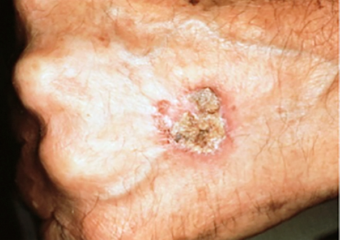
A persistent, scaly red patch with irregular borders that sometimes crusts or bleeds.
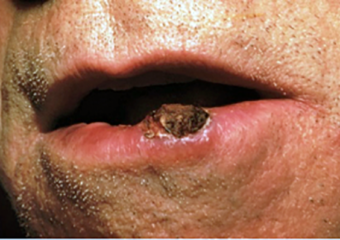
An elevated growth with a central depression that occasionally bleeds. It may rapidly increase in size.
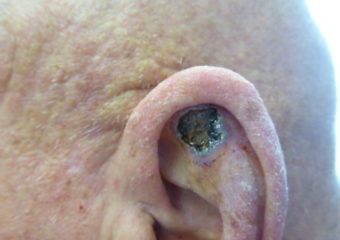
An open sore that bleeds or crusts and persists for weeks.
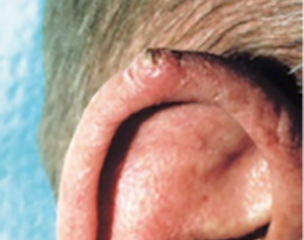
A wart-like growth that crusts and occasionally bleeds.
SCCs can also look different from the descriptions above. If you notice anything unusual, such as a sore that fails to heal, or a new spot, make an appointment with your dermatologist.
Please note: Since not all SCCs have the same appearance, these photos serve as a general reference for what they can look like.
What you can do
Examine yourself head to toe once a month: Keep an eye out for new or changing lesions that grow, bleed, or do not heal. Learn how to check your skin here.
When in doubt, check it out. Follow your instincts and visit your doctor if you see a spot that just doesn’t seem right.
See your dermatologist for a professional skin exam every year even if you don’t see anything suspicious. These specialists are skilled at identifying and treating abnormal skin growths that may be undetectable to the untrained eye and can check areas of your body that are difficult for you to see yourself.
Follow up regularly: Especially if you’ve already had either SCC or basal cell carcinoma (BCC), melanoma or precancers like actinic keratosis, be sure to see your dermatologist for a skin exam at recommended intervals.
Practice sun safety: Making daily sun protection a part of your lifestyle is the single most effective way to reduce your risk of developing skin cancer.
More SCC Images
Reviewed by:
Elizabeth K. Hale, MD
C. William Hanke, MD
Last updated: February 2022

